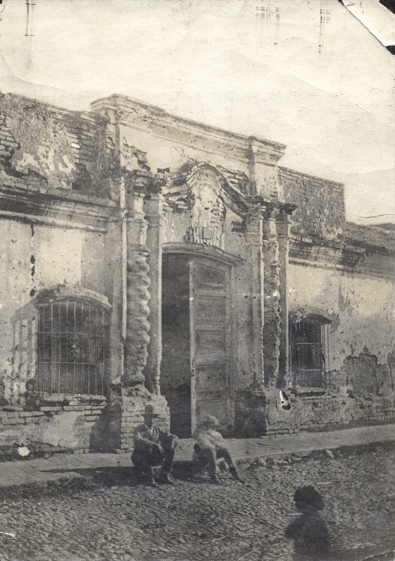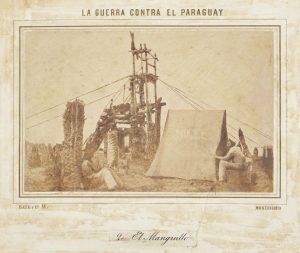El Ministerio de Cultura de la Nación, a través de la Secretaría de Patrimonio Nacional, presenta «La Fotografía en los museos nacionales. Guía para su difusión y acceso. Tomo I», una publicación que brinda acceso a la colección fotográfica de doce de los veinticuatro museos nacionales que tienen este tipo de patrimonio.
El libro estará disponible en las bibliotecas y archivos de todos los museos nacionales y otras bibliotecas públicas del país. La versión digital se puede consultar en la cuenta de Issuu.com del Ministerio.
 “La pandemia puso en relieve la importancia de elaborar herramientas y productos culturales que faciliten el acceso público del patrimonio.- explica Viviana Usubiaga, directora Nacional de Gestión Patrimonial – En ese sentido, durante el año pasado se priorizó la culminación del primer tomo que permite conocer las descripciones de los fondos de gran parte de nuestros museos desde cualquier lugar, al mismo tiempo que difundir la procedencia de álbumes y fotografías que son de un valor histórico, cultural y artístico inmenso”.
“La pandemia puso en relieve la importancia de elaborar herramientas y productos culturales que faciliten el acceso público del patrimonio.- explica Viviana Usubiaga, directora Nacional de Gestión Patrimonial – En ese sentido, durante el año pasado se priorizó la culminación del primer tomo que permite conocer las descripciones de los fondos de gran parte de nuestros museos desde cualquier lugar, al mismo tiempo que difundir la procedencia de álbumes y fotografías que son de un valor histórico, cultural y artístico inmenso”.
En una primera etapa la investigación incluyó los acervos fotográficos de doce de los veintiséis museos nacionales dependientes del Ministerio de Cultura de la Nación que abarcan alrededor de 50 mil fotografías. Ya está en marcha el relevamiento de los museos que serán parte del segundo tomo.
«Cada relevamiento que se hace en cada museo sirve también como diagnóstico. Ese diagnóstico es clave en la elaboración de políticas culturales específicas en materia de conservación, catalogación y acceso», explica Usubiaga.
Muchos de estos museos albergan imágenes producidas por autores que forman parte de la historia de la fotografía argentina y también ejemplares de antiguos procesos como los daguerrotipos, ferrotipos, ambrotipos o copias a la albúmina, los cuales dan cuenta de la evolución técnica del medio desde sus inicios.
Entre las piezas, se destacan los retratos del escritor Ricardos Rojas y su esposa tomadas por el estudio Witcomb, que se conserva en el Museo Rojas. Por su parte, el Museo Mitre tiene bajo custodia una de las colecciones más importantes del país. En La Biblioteca Americana se encuentran los Álbumes Fotográficos Históricos que dan cuenta del proceso de construcción del Estado Nación como tal. El álbum de Vistas Fotográficas del Ferro Carril de Buenos Aires al Pacífico de 1884, realizado por Samuel Boote, y el Álbum de Vistas de La Plata desde su fundación (1882-1884), realizado por Tomás Bradley son algunos de ellos. Esta institución también alberga una serie de 10 albúminas sueltas de la Guerra del Paraguay, de las cuales seis corresponden al estudio uruguayo Bate & Co.
De la Casa Natal Sarmiento, en San Juan, se destaca la albúmina Sarmiento yacente en cama de 1888, firmada por Manuel de San Martín. El Museo Nacional Estancia Jesuítica en Córdoba, por su parte, conserva fotografías en formato estereoscópico de escenas campestres y dentro de la estancia de finales del siglo XIX; la Casa Histórica de Tucumán tiene en guarda las famosas fotografías realizadas por Ángel Paganelli. Este fotógrafo de origen italiano comenzó a trabajar en Tucumán alrededor de 1865 y realizó el único registro existente de la fachada original de la casa. Este documento sirvió para la reconstrucción del edificio en 1943 tarea que se encomendó al arquitecto Mario José Buschiazzo.
El Museo Historia del Traje cuenta con fotografías de moda, de tiendas y comercios como Casa Muro, San Miguel o La Casa Marilú, fondos de importantes modistos como la diseñadora austríaca Fridl Loos. Se destaca también un álbum de la firma Henriette, que incluye retratos de sus clientas con sus vestidos de novias.
 La colección de daguerrotipos del Museo Histórico Nacional es una de las más importantes del país. Incluye retratos y vistas de la ciudad de Buenos Aires, como las Vista del Fuerte de Buenos Aires (c.1853), la única imagen del Cabildo porteño realizada por Charles DeForest Fredricks y 113 retratos de personajes de gran relevancia histórica como el del gobernador de la provincia de Salta, Miguel Otero, realizado por John Bennet de 1845 (hasta donde se sabe el más antiguo daguerrotipo tomado en el país). También se conserva el daguerrotipo de San Martín hecho en París en 1848 de autor desconocido, Entre las 12 mujeres retratadas se encuentra el retrato de “Manuelita” de 1844-46 atribuido a John Elliot y el de María Sánchez de Mendeville, viuda de Thompson de 1854 realizado por Antonio Pozzo.
La colección de daguerrotipos del Museo Histórico Nacional es una de las más importantes del país. Incluye retratos y vistas de la ciudad de Buenos Aires, como las Vista del Fuerte de Buenos Aires (c.1853), la única imagen del Cabildo porteño realizada por Charles DeForest Fredricks y 113 retratos de personajes de gran relevancia histórica como el del gobernador de la provincia de Salta, Miguel Otero, realizado por John Bennet de 1845 (hasta donde se sabe el más antiguo daguerrotipo tomado en el país). También se conserva el daguerrotipo de San Martín hecho en París en 1848 de autor desconocido, Entre las 12 mujeres retratadas se encuentra el retrato de “Manuelita” de 1844-46 atribuido a John Elliot y el de María Sánchez de Mendeville, viuda de Thompson de 1854 realizado por Antonio Pozzo.
La Fotografía en los museos nacionales. Guía para su difusión y acceso. Tomo I es un proyecto co-gestionado por la Dirección Nacional de Gestión Patrimonial y la Dirección Nacional de Museos, con el objetivo de ampliar el acceso público de los museos, sus colecciones, sus archivos y otros bienes que forman parte de nuestro patrimonio.


